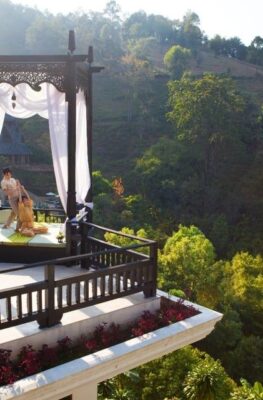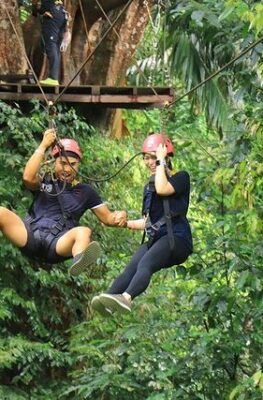Published on July 6, 2013
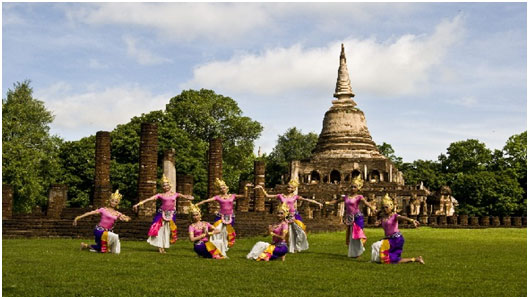
Thais are a proud people, and rightfully so. Their country is one of sublime beauty, their food is out-of-this-world, their history and traditions are rich, and their culture is untainted by colonial influences.
On this last point the citizenry of the Land of Smiles seem particularly satisfied, and a strong sense of nationalism informs and sustains the arts in their country, ensuring that they retain their traditional distinctiveness, often with the support of Royal patronage to help insure that customs live on.
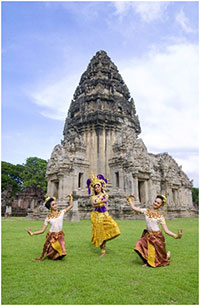
In no place is this truer than in performing arts like theatre and dance, where there are six traditional dramatic forms. Some are considered classical dance, or high art, like the “masked pantomime” known as Khon, and some are considered folk dance, or low art, such as Likay or Ram Muay, the familiar ritualized ceremony that takes place before Thai boxing matches.
In keeping with its classification as high art, Khon depicts scenes from the Ramakian, which is the national epic of Thailand that was adapted from a 5th century Indian poem. This classic tale of a hero’s journey was originally performed only for the Royal court and is one of the most elaborate forms of Southeast Asian dance-drama, performed by an all-male cast featuring hundreds of monkey and demon figures masked with intricate head coverings who mime the action while a chorus sings the story in the background. The story is conveyed only through expressive gestures with no spoken lines.
Another one of the classical forms is the Lakhon, which actually refers to several kinds of dance dramas that are also derived from the Ramakian, but which are less formal and have actors who do not wear masks. Most Thai cultural historians agree that the Lakhon Chatri, defined by women who speak their lines with a lively musical accompaniment, and which features slightly off-color humor and rapid, animated movements, is the oldest surviving form. The epic poems of Lakhon Nai can be identified by deliberate choreography and a wind and percussion ensemble called piphat, and its glittering costumes, performed by both men and women. Lakhon Nok is mainly a product for common people, and is usually based on folk tales featuring a mix of spoken and sung text, and occasional improvisations. As with Lakhon Nai, both males and females perform.
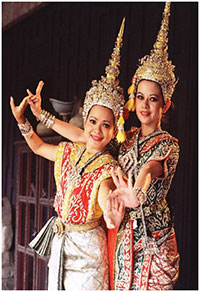
Lakhon Nok is actually an ancestor of the Likay, another popular type of traditional Thai dance that is a partly improvised, often ribald folk play most popular in rural and small-town Thailand. It is often performed at festivals by troupes of traveling actors who deliver a gaudy combination of classical and folk music, flamboyant costumes, slapstick comedy, double entendres, and melodrama. Perhaps the most interesting aspect is the willingness for Likay to delve into matters of contemporary politics, never far from the minds of most Thais.
Manohra is the close sibling of Likay for the Southern region of the country, and is a dance drama that recounts a famous romance tale between Kinnari Manohra, a half-bird half-woman creature, and Prince Suthon. It is a story of jealousy and betrayal, perpetrated by unscrupulous court advisors who, while the Prince is away at war, mislead the king into thinking that sacrificing Manohra is the only way to prevent his untimely demise.
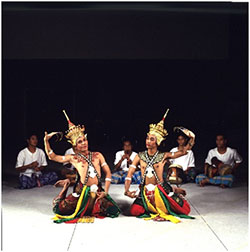
The final two traditional dramatic forms are theatrical performances featuring images and figures only. Nang is theatre of shadow puppets where 2-dimensional characters are maneuvered between a screen made of cloth and a backlight. These performances are generally conducted at night and recount tales of both Deities and laypeople, and they represent the norms of contemporary Thai society. Common themes are family struggles, love and romance, orphans seeking loved-ones, and heroic voyages. As in Indonesia and Malaysia, these puppets are cut from parched buffalo or cow hides, which are known as “nang” in Thai language. Finally, there are the Royal marionettes known as Lakhon Lek, or “little theater”. Made of koi paper and wire frames, these meter-high puppets wear elaborate costumes based on the classical Khon story and are manipulated to express similar themes and movements are taken from Thai folk tales and sometimes from the Ramakian.
In addition to the formal classical dances, each region of Thailand has its own unique traditions. A typical performance made for tourists will include dances from several different parts of the country combined into one, offering a bit of a survey of this eclectic art form. So whether you are an interested bystander at a local fair, a devoted scholar of Thai history and traditional culture, or somewhere in between, Thai dance and theatre is never far away and always an impressive show.




